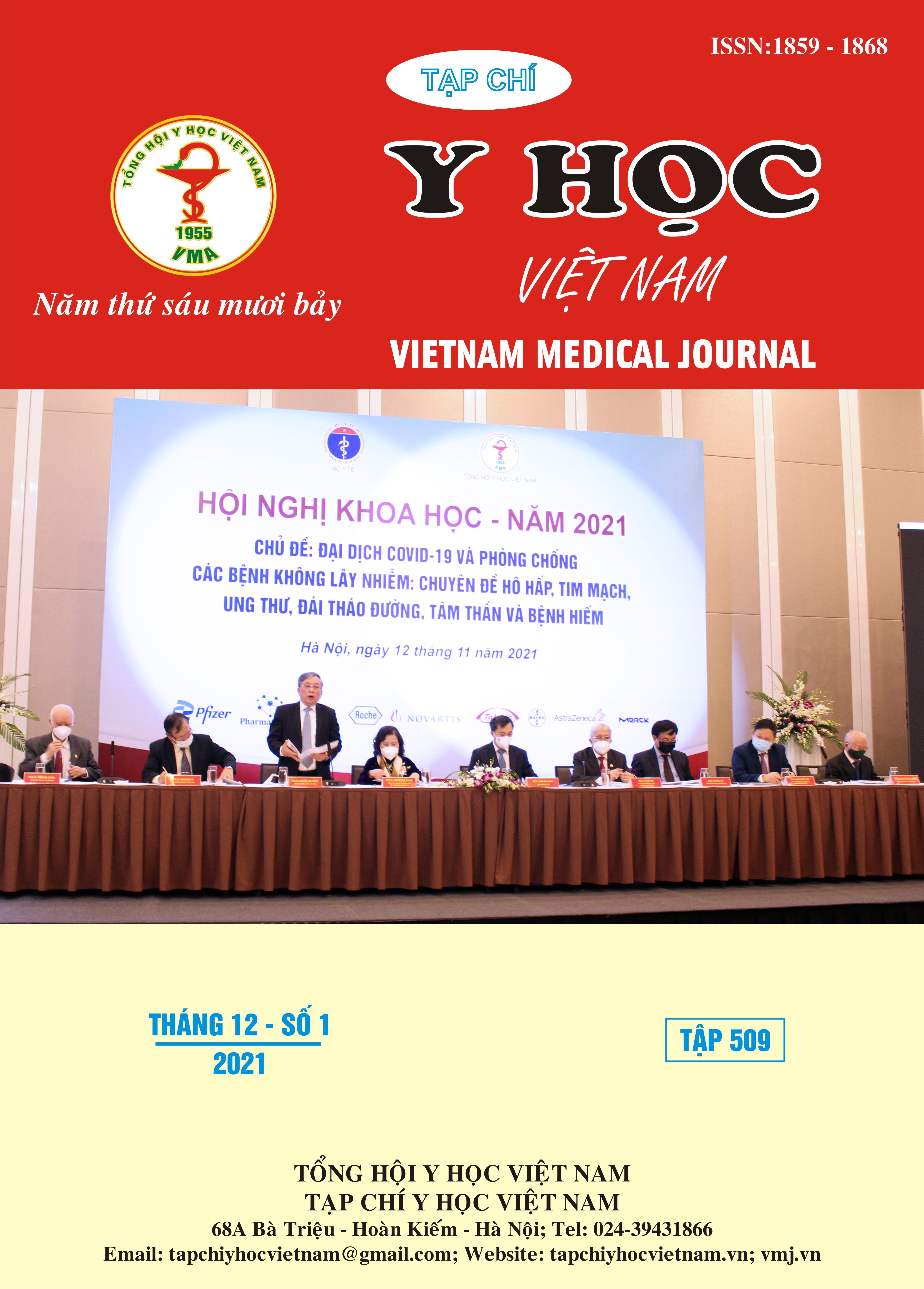EFFICACY OF INTRAVENOUS HUMAN IMMUNOGLOBULIN IN DRUG – INDUCED TOXIC EPIDERMAL NECROLYSIS
Main Article Content
Abstract
Objectives: In this study, we aimed to evaluate the efficacy of intravenous immunoglobulin in patients with drug-induced toxic epidermal necrolysis (TEN). Methods: This was a retrospective study on patients diagnosed as drug-induced TEN at Center of Allergology and clinical immunology, Bach Mai Hospital during the period of April 2019 to July 2020. Results: IVIg was used for treatment in 9 out of 29 cases, the mortality rate in the IVIg group was 0% compared to 10% in the non-IVIG group. There was no statistically significant difference in the average length of hospital stay in the two group (15.33 ± 7,632 days in the IVIg group versus 14.15 ± 4.392 days in the non-IVIg group) Conclusion: IVIg is one of the systemic therapies in the treatment of TEN, however, the effectiveness of treatment is still controversial. Larger and more comprehensive studies are needed to evaluate the efficacy of this method.
Article Details
Keywords
Drug allergy, TEN, IVIg
References
2. Dịu PTHB. Đặc điểm lâm sàng, mô bệnh học của một số thể dị ứng thuốc có bọng nước tại khoa Dị ứng - Miễn dịch lâm sàng, bệnh viện Bạch mai (2004-2005).
3. Fritsch PO, Sidoroff A. Drug-Induced Stevens-Johnson Syndrome/Toxic Epidermal Necrolysis. Am J Clin Dermatol. 2000;1(6):349-360.
4. Roujeau J-C, Bastuji-Garin S. Systematic review of treatments for Stevens-Johnson syndrome and toxic epidermal necrolysis using the SCORTEN score as a tool for evaluating mortality. Ther Adv Drug Saf. 2011;2(3):87-94.
5. Lương Đức Dũng, Nguyễn Văn Đoàn (2015), Nghiên cứu đặc điểm lâm sàng, cận lâm sàng, mô bệnh học và hóa mô miễn dịch của hội chứng Stevens-Johnson và Lyell do dị ứng thuốc.
6. Phùng Thị Phương Tú, Nguyễn Văn Đoàn, Áp dụng thang điểm SCORTEN trong tiên lượng bệnh nhân hội chứng Stvevens - Johnson, Lyell do dị ứng thuốc. Tạp chí Nghiên cứu Y học, 2013. 81(5).
7. Bayaki Saka, F.B.-T., Felix A. Atadokpe ́de ́, Le ́on Kobangue, Pascal Antoine Niamba, Hugues Ade ́gbidi, Hubert G. Yedomon, Adama Traore, and Vincent P. Pitche Stevens–Johnson syndrome and toxic epidermal necrolysis in sub-Saharan Africa: a multicentric study in four countries. International Journal of Dermatology 2013.
8. Sekula, P., et al., Comprehensive survival analysis of a cohort of patients with Stevens-Johnson syndrome and toxic epidermal necrolysis. J Invest Dermatol, 2013.


